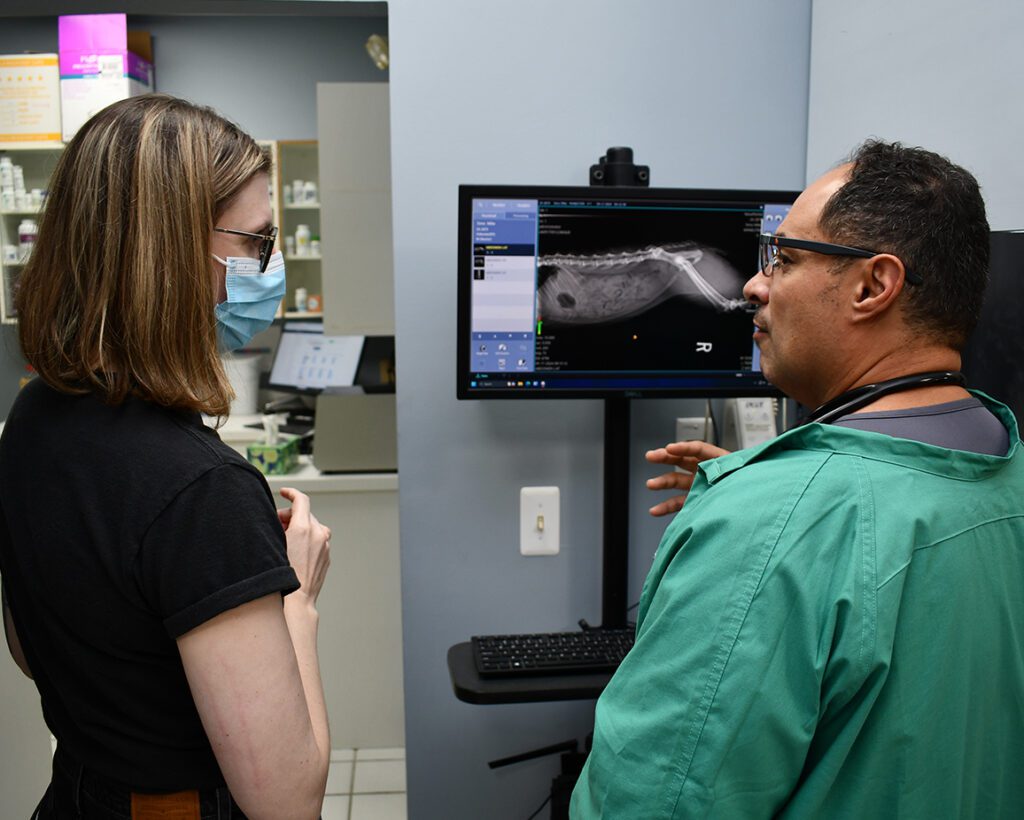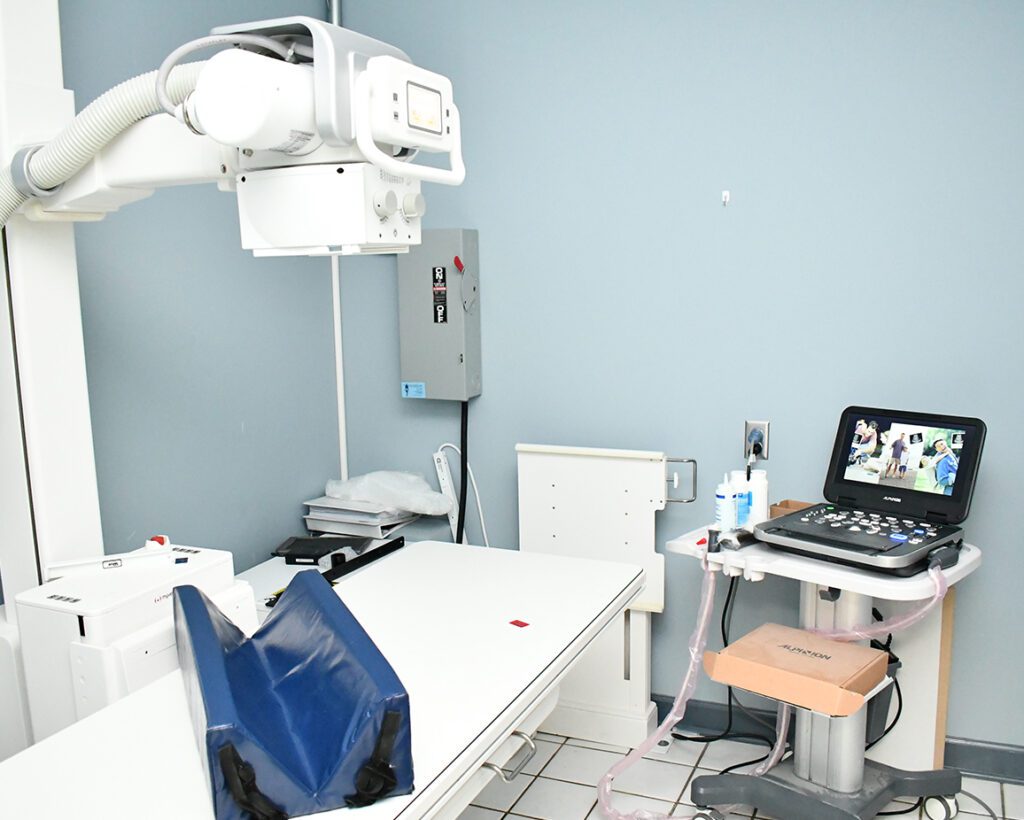
Digital Radiology for Pets
Digital radiology for pets refers to the use of digital X-ray technology to capture high-resolution images of your pet’s internal structures, such as bones, organs, and tissues. Unlike traditional film-based X-rays, digital radiology uses digital sensors to produce images, allowing our veterinarians to view and analyze the results immediately on a computer. It is a commonly used diagnostic tool in veterinary medicine for a wide range of pet health issues. It is a quick, non-invasive procedure that generally does not cause discomfort for the pet and generally pets do not need to be sedated. Sedation may be used if a pet is anxious or needs to stay very still during the process.
The Importance of Digital Radiology For Pets
- Digital Sensors: Instead of using photographic film, digital X-rays use specialized sensors to capture images, which are then processed and displayed on a computer.
- Immediate Results: The images can be viewed immediately, allowing veterinarians to quickly assess the condition of the pet and make informed treatment decisions.
- Higher Image Quality: Digital radiographs offer better image quality, enabling more accurate diagnoses.
- Faster Process: Since the images are available instantly, diagnosis and treatment can start sooner.
- Less Radiation Exposure: Digital radiology typically requires less radiation compared to traditional X-rays, making it safer for pets.
- Enhanced Image Features: Veterinarians can adjust the brightness, contrast, and zoom on the digital images to enhance specific details, aiding in more precise evaluations.
Easy Storage and Sharing: Digital images can be stored electronically, making it easy to share with specialists or for future reference.
When Do We Use Digital Radiology?
Bone and Joint Issues: Digital radiology is often used to diagnose fractures, dislocations, arthritis, or other orthopedic issues.
Chest and Lung Evaluations: It helps in diagnosing conditions such as pneumonia, heart disease, or tumors in the chest cavity.
Abdominal Imaging: Digital X-rays can reveal issues such as blockages, foreign objects, organ enlargement, or tumors in the abdominal area.
Dental Examinations: It is commonly used in dental care to evaluate the health of teeth, roots, and surrounding bone structures.
Cancer Diagnosis: Digital radiographs can detect masses or tumors in various parts of the body.
Client Reviews


